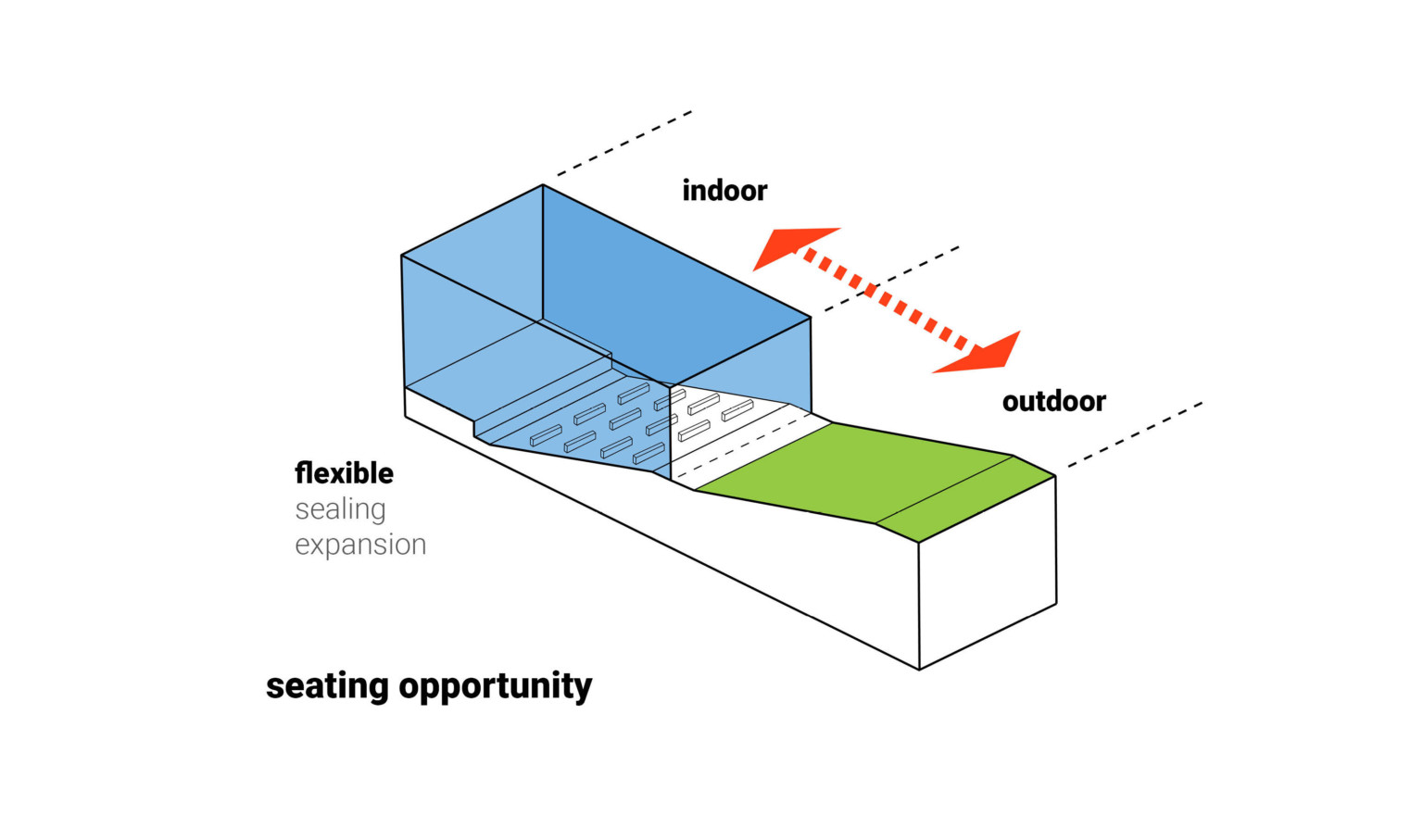
Operational Considerations for (Re)Opening Night
Social Distancing
The current federal guidelines include maintaining a minimum of 6 feet between parties that are not cohabitating. This requirement provides the biggest challenge for arts organizations that typically have patrons, performers, and crew members in intimate proximity with each other. Factor into this the audience’s potential proximity to the performers or musicians and the proximity of the crew to performers and performers plus musicians to each other.
- Venues can reorganize entry/exit sequences to reduce potential contact in linear, sequenced, and orchestrated pathways, a strategy similar to the amusement park “fast-pass” scheduled entrances. Once in the venue, patrons would wait in a segmented queueing system – 6 feet apart per patron or group – that loads the venue from the front to the back and from the center of rows out. Exiting the venue would reverse the procedure in which the back of the house exits first moving towards the front in a timed sequence. Outdoor environments may need to be leveraged due to unique lobby sizes and access points.
- Seating arrangements could be assigned by a tiered ticketing system that gives preferred seating to single seats and groups that do not need to follow the socially distanced guidelines due to cohabitation. Because this is a dynamic seating approach, guaranteed seating locations would most likely not be possible and must be taken into consideration.

Food and beverage or concessions should eliminate the exchange of cash or credit card touch screens and transition to touchless pay points. Other options include eliminating food and beverage options altogether and producing one-act or shorter productions.
- Front-of-house staff should be provided with personal protective equipment and be properly trained in its use. Staff would function as the on-the-ground guardians of the facility’s safety and hygiene policies, including maintaining social distancing for themselves and guests.
- The nature of live performance positions crew and performers, including musicians, in tight quarters with each other. Providing safety measures between them is crucial and will be best achieved through stringent health check protocols. Careful consideration must be taken in maintaining, if possible, twice the recommended distance from the audience (12 feet) as performers have a greater opportunity to aerosolize saliva while performing.
Hand washing and/or sanitizing stations should be placed at all entrances, concessions, ticketing kiosks, points of entry, bathrooms, and other high traffic areas where there may be points of contact on surfaces. These stations should preferably be the touchless variety and be checked often to assure batteries are charted, and reservoirs are full.

Reducing Patron Touchpoints
People touch more than they realize. Designing how people move through an environment and what is commonly touched should be assessed and mitigated at any reasonable cost. Make the cleaning staff clearly recognizable through uniforms or other distinguishing indicators to aid patrons in identifying them should a need arise. Proper disposal of all cleaning supplies, masks, and gloves should be clearly marked and readily available. The following high-touch areas should be eliminated or cleaned on an active basis:
- Door handles and push plates are probably one of the most obvious high-touch areas. Reduce this touchpoint by using automated door openers or door stops to prop open doors in a manner that will not violate fire codes.
- Handrails along stairs, ramps, and escalators cannot be eliminated per most building codes. Every effort to sanitize these during potential interaction with patrons should be made.
- Elevator buttons must be cleaned continuously. Provide an elevator operator who is responsible for pushing all buttons. This strategy requires one operator in the cab and one on each floor to interact with the outside buttons.
- Countertops and ticket windows should be disinfected after each transaction by the designated staff at that location. Social distance markings on the floor should be clearly visible to prevent congregating too close at a counter.

Cast and Crew Accommodations/Teaming
Because performers, staff, and crew are typically in close proximity during a production, it may be necessary to provide accommodations for cast and crew to self-isolate for two weeks prior to a production run, and then provide sanitized housing and a close location to the venue to ensure the integrity of health and safety. Cost savings for this would be apparent by reducing a stable of substitutes should someone or multiple members of the production fall ill with the virus, protecting a performance from having to shut down due to a lack of performers while in quarantine.
To keep a unified team that only works with each other helps to mitigate the potential spread of the virus by limiting those with whom they are in close contact. This holds true for performers and wardrobe staff helping in a quick-change scenario.

Policy Signage and Messaging
Information provided to patrons, staff, crew, and performers that is clear, consistent, and visible will go a long way in successfully reopening and operating your venue. This message should be updated based on any new information received by state authorities, and changes should be communicated promptly.
The message is entirely dependent on which policies and procedures your organization decides to implement. Being in the entertainment industry, where creativity abounds, is an opportunity to present this in a fun or branded way.










